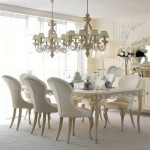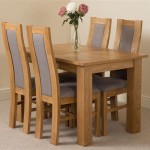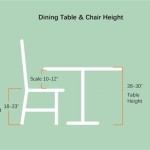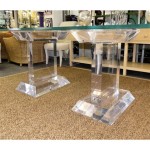Inflatable Hot Tub Decking Ideas: Enhancing Your Soak Zone
Inflatable hot tubs offer a cost-effective and portable solution for enjoying the therapeutic benefits of hydrotherapy. However, simply placing an inflatable hot tub directly on the ground can lead to discomfort, potential damage to the tub, and an aesthetically unappealing backyard setup. Investing in appropriate decking or ground covering solutions enhances both the functionality and visual appeal of your inflatable hot tub area. This article explores various decking ideas, focusing on materials, design considerations, and practical tips for creating a safe and enjoyable hot tub environment.
Prioritizing Safety and Functionality
Before selecting a specific decking material or design, it is critical to address the fundamental requirements for safe and functional hot tub placement. The primary concern is ensuring a level and stable base. Inflatable hot tubs, when filled with water and occupants, can weigh several tons. An uneven surface puts undue stress on the tub's structure, potentially leading to leaks, damage, and even failure. Furthermore, a stable base prevents the tub from shifting or wobbling during use, enhancing user safety and comfort.
Drainage is another crucial factor. The area surrounding the hot tub will inevitably get wet due to splashing, entering, and exiting. Proper drainage prevents water from pooling, reducing the risk of slips and falls and minimizing the growth of mold and mildew. Consider the natural drainage patterns of your yard and incorporate solutions such as sloped surfaces or drainage channels into your decking design.
Accessibility should also be carefully considered. Ensure adequate space around the hot tub for comfortable entry and exit. Think about accommodating users with mobility issues by incorporating ramps or steps with handrails. Furthermore, plan for easy access to the hot tub's control panel and power source.
Exploring Decking Material Options
The choice of decking material significantly impacts the overall look, durability, and maintenance requirements of your hot tub area. Several options are available, each with its own advantages and disadvantages.
Wood Decking: Traditional wood decking offers a classic and natural aesthetic. Pressure-treated lumber is a common and affordable option, providing resistance to rot and insect infestation. However, wood decking requires regular maintenance, including staining or sealing, to protect it from the elements and prevent warping or cracking. Hardwood options, such as cedar or redwood, offer greater durability and natural resistance to decay but come at a higher cost. Consider the grain of the wood and how it will appear when wet. Rougher textures can provide better grip, while smoother woods may require additional non-slip treatments.
Composite Decking: Composite decking, made from a blend of wood fibers and recycled plastic, offers several advantages over traditional wood. It is highly resistant to rot, insect damage, and fading, requiring minimal maintenance. Composite decking also comes in a wide range of colors and textures, allowing for greater design flexibility. While more expensive than pressure-treated lumber, composite decking offers a longer lifespan and lower long-term maintenance costs. However, some composite decking materials can become hot in direct sunlight, so consider choosing a lighter color or providing shade.
Stone Pavers: Stone pavers provide a durable and elegant solution for hot tub decking. Natural stone options, such as flagstone or slate, offer unique textures and colors, creating a visually appealing and natural-looking space. Concrete pavers are a more affordable and versatile option, available in various shapes, sizes, and colors. Stone pavers are highly resistant to moisture, heat, and fading, requiring minimal maintenance. However, they can be more challenging to install than wood or composite decking, requiring proper leveling and base preparation. The texture of the stone is a key consideration as some can become slippery when wet.
Rubber Decking Tiles: Rubber decking tiles are a practical and safe option for hot tub areas, particularly in households with children. Made from recycled rubber, these tiles provide a soft and slip-resistant surface, reducing the risk of injuries. Rubber decking tiles are also highly durable, resistant to moisture and fading, and easy to install. They come in a variety of colors and patterns, allowing for some design flexibility. However, rubber decking tiles may not offer the same aesthetic appeal as wood or stone options. They are also more susceptible to staining and may require periodic cleaning.
Gravel or Crushed Stone: For a more rustic and cost-effective solution, consider using gravel or crushed stone as a base for your hot tub. This option provides excellent drainage and is relatively easy to install. However, it is essential to choose the right type of gravel or stone to prevent sinking or shifting. Compacted gravel with a layer of pea gravel on top can create a stable and comfortable surface. This option may require more ongoing maintenance to keep debris and weeds at bay. Consider using landscape fabric underneath the gravel to inhibit weed growth.
Design Considerations for a Hot Tub Deck
Beyond material selection, several design considerations will enhance the functionality and aesthetics of your hot tub deck. These include the size and shape of the deck, privacy screening, lighting, and landscaping.
Size and Shape: The size of your hot tub deck should be proportional to the size of the hot tub and the surrounding space. Allow adequate room for entry and exit, as well as for seating, storage, and other amenities. The shape of the deck can be customized to complement your backyard's overall design. A rectangular deck is a simple and versatile option, while a curved or multi-level deck can add visual interest.
Privacy Screening: If privacy is a concern, consider incorporating privacy screens or fencing around your hot tub area. Options include wood lattice panels, bamboo screens, and planted hedges. The height and placement of the screening should be carefully considered to provide adequate privacy without obstructing views or airflow.
Lighting: Proper lighting is essential for creating a safe and inviting hot tub environment. Consider incorporating a combination of ambient lighting, task lighting, and accent lighting. Ambient lighting can be achieved with string lights, lanterns, or pathway lights. Task lighting, such as spotlights or floodlights, can illuminate entry and exit points. Accent lighting can highlight landscaping features or architectural details. Ensure all lighting fixtures are weatherproof and suitable for outdoor use. Low voltage lighting is a safe and energy-efficient option for hot tub areas.
Landscaping: Landscaping can enhance the beauty and tranquility of your hot tub area. Consider incorporating plants that thrive in moist environments and provide shade or privacy. Ornamental grasses, ferns, and flowering shrubs are excellent choices. Avoid planting trees too close to the hot tub, as falling leaves and debris can clog the filter. Use potted plants to add pops of color and texture to the deck. Think about plants that repel insects like citronella or lavender.
Storage: Incorporating storage solutions into your hot tub deck design can help keep the area tidy and organized. A storage bench can provide seating while also concealing towels, chemicals, and other supplies. A small shed or cabinet can house larger items, such as pumps and filters. Consider the proximity of storage to prevent having to carry heavy items across the yard.
Color and Texture: The color and texture of your decking material should complement the surrounding landscape and your home's exterior. Natural wood tones and earthy colors create a warm and inviting atmosphere, while lighter colors can brighten up a shady area. Consider the texture of the decking material for safety and comfort. A textured surface provides better grip, while a smooth surface is easier to clean.
By carefully considering these design elements, you can create a hot tub deck that is both functional and aesthetically pleasing, transforming your backyard into a relaxing and enjoyable oasis.

Inflatable Hot Tub Deck Ideas

How To Build A Hot Tub Surround Youtube

Inflatable Hot Tub Deck Ideas
:max_bytes(150000):strip_icc()/plug-and-play-hot-tubs-006-e3bdb9f3f0c54982871a2bdb50ec5ac7.jpg?strip=all)
30 Hot Tub Deck Ideas Perfect For Outdoor Entertaining

Inflatable Hot Tub Ideas For Your Outdoor Space Blog

Cozy Outdoor Hot Tub Ideas L Backyard Deck Design Home Decor Youtube

Hot Tub Michael Glen Motion

What Is The Best Hot Tub Base In 2025 6 Great Ideas

Make A Floating Deck For An Inflatable Spa With Motorized Cover 18 Steps Pictures Instructables

28 Hot Tub Deck Ideas








